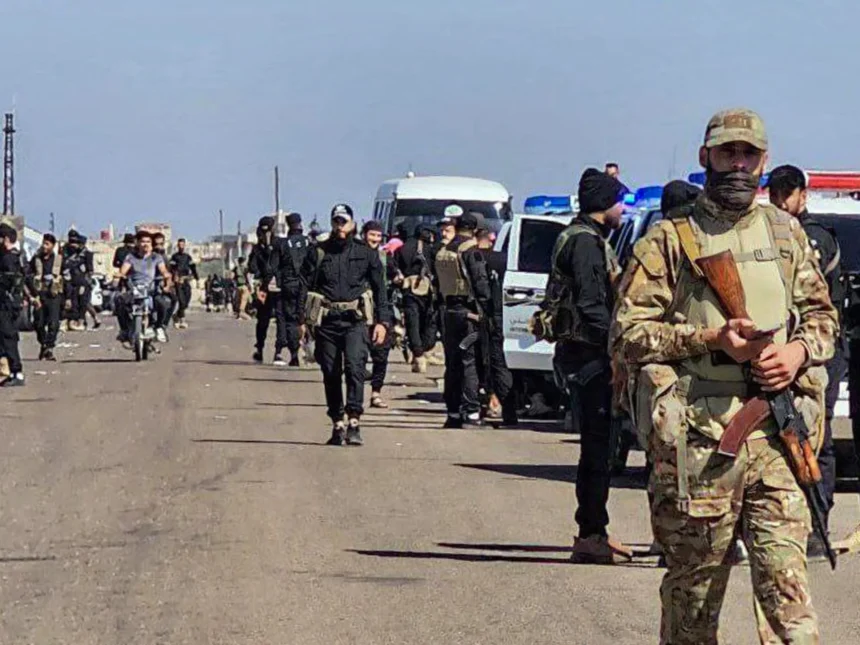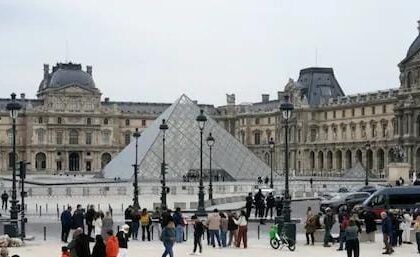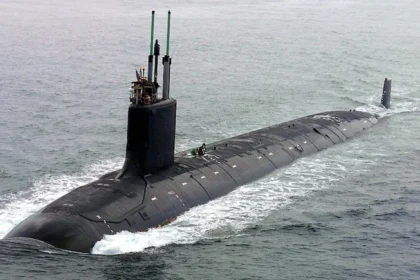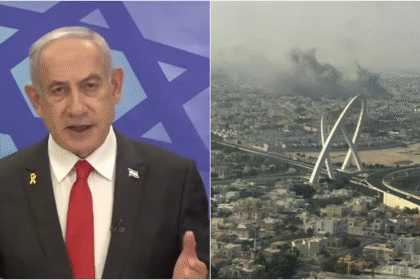The Damascus Flashpoint — Unfolding Tensions as Israel Strikes Bedouin Convoy in Syria
On July 18, 2025, Israeli air forces reportedly launched a targeted strike on a Bedouin convoy in Syria’s Deir Ezzor province, marking a new and volatile chapter in the already fraught Middle East conflict. According to regional and international sources, the strike came in retaliation for cross-border attacks that originated near the Syria-Israel frontier—a region that has increasingly become a proxy battlefield for broader regional confrontations.
While Israel has not officially confirmed the specifics of the operation, military analysts, local witnesses, and Syrian monitoring groups suggest that the strike was precise, calculated, and deeply symbolic. The convoy, believed to include both civilians and suspected paramilitary operatives, was allegedly moving through a known transit corridor used for logistical supply between pro-Iranian militias operating in eastern Syria.
This event not only intensifies the hostilities between Israel and its adversaries across the Syrian landscape but also complicates an already precarious web of regional dynamics involving Iran, Hezbollah, the Assad regime, and various tribal and ethnic factions—including the Bedouins themselves, who have long occupied an ambiguous position in the conflict zone.
The Strategic Geography of the Strike
The location of the reported strike—near Deir Ezzor in eastern Syria—is far from incidental. This region, bordering both Iraq and the Euphrates River, has become a strategic corridor used by Iranian-backed militias to move fighters, weapons, and resources. The Bedouin tribes of this area have historically resisted foreign control, but in recent years, their socio-political vulnerability has made them susceptible to entanglement in wider geopolitical agendas.
Israeli officials have repeatedly warned that they will not tolerate the expansion of Iranian or Hezbollah-linked infrastructure within Syria. They view the consolidation of military logistics in the Syrian desert as an existential threat, particularly if those routes are used to deliver long-range missiles or drone capabilities into the hands of hostile actors on Israel’s northern border.
In this context, the strike on the Bedouin convoy—regardless of whether it was strictly military or partially civilian—signals a decisive message: Israel is prepared to project force deep into Syrian territory to neutralize threats before they materialize on its borders.
Bedouin Tribes in the Crossfire: Collateral or Combatants?
One of the more complex and controversial aspects of the strike is the identity of the convoy’s passengers. While Syrian state media and tribal representatives claim the convoy consisted of civilians, including women and children, other regional intelligence sources allege that some elements within the group were affiliated with Iranian-backed militias or served as logistical collaborators.
The Bedouins, a traditionally nomadic Arab group, have historically maintained a tenuous relationship with central governments and foreign forces alike. In Syria, Bedouin tribes have been courted by multiple sides of the conflict—from ISIS and anti-Assad rebels to the Assad regime and Iranian forces. Their deep knowledge of the desert terrain, tribal loyalties, and transnational networks make them both a strategic asset and a potential liability to any faction seeking control over eastern Syria.
As such, any Israeli action against Bedouin movements—whether justified by intelligence or not—risks being seen as a disproportionate and inflammatory escalation, especially in the eyes of international observers and humanitarian groups.
Iran’s Expanding Shadow in Syria
Behind the immediate headlines lies a much broader concern: Iran’s growing influence across Syria. Since the early years of the Syrian civil war, Iran has entrenched itself both militarily and ideologically within the country’s borders. What began as advisory support to President Bashar al-Assad has evolved into a sprawling network of militias, training camps, and arms depots that stretch from Damascus to the Iraqi border.
Israel views this expansion not just as a Syrian issue but as a strategic encirclement. Iranian Revolutionary Guard Corps (IRGC) commanders have openly vowed to open multiple fronts against Israel should a regional war break out. Deir Ezzor and the surrounding desert corridor now represent a critical link in Tehran’s ability to move weapons and influence across the Levant.
The Bedouin convoy—whether militarized or not—was likely perceived through this lens. From Israel’s perspective, any movement within this corridor could potentially serve Iran’s larger ambitions. And in a region where ambiguity often blurs the lines between civilian and combatant, preemptive strikes have become a cornerstone of Israeli defense doctrine.
International Reactions and Diplomatic Fallout
The international response to the reported airstrike has been predictably divided. Western allies have remained cautious, awaiting further confirmation of the details. The United States, while a close strategic partner of Israel, has expressed concern over rising civilian casualties in the broader regional conflict and urged all parties to exercise restraint.
The United Nations has called for an independent investigation, citing potential violations of international law if non-combatants were indeed targeted. Russia and Iran, staunch backers of the Assad regime, have condemned the strike as an act of aggression and a breach of Syrian sovereignty.
Arab states, meanwhile, find themselves in a complicated position. Countries like Jordan and Egypt, which have peace treaties with Israel, are wary of being dragged into a broader regional conflagration. The Gulf states, especially Saudi Arabia and the UAE, are more focused on internal economic reforms and regional stabilization efforts but remain skeptical of Iran’s growing regional footprint and thus silently acknowledge Israel’s strategic concerns.
Media Narratives and Misinformation
As with many incidents in the fog of Middle Eastern conflict, media narratives surrounding the Israeli strike on the Bedouin convoy vary widely depending on the source. Syrian state media portrays the event as a massacre, emphasizing the civilian angle and accusing Israel of war crimes. Israeli media, on the other hand, focuses on the strategic necessity of the operation and the danger posed by Iranian entrenchment.
Social media platforms, particularly those operated from within Syria and Lebanon, have become battlegrounds for truth and propaganda. Grainy videos, alleged eyewitness accounts, and photos of burned-out vehicles have gone viral, yet verifying their authenticity is nearly impossible. This digital information war has made it increasingly difficult for international audiences to discern the facts.
The Strike That Could Reshape the Border Equation
The Israeli strike on the Bedouin convoy—regardless of its final casualty assessment—represents more than just a momentary escalation. It is a symptom of a deeper, more dangerous trend: the erosion of clearly defined frontlines, the weaponization of nomadic populations, and the increasing willingness of regional powers to carry out military operations beyond their borders.
For Israel, the message is clear—preventative force remains an acceptable policy, even if it risks international condemnation. For Syria and Iran, it is yet another reminder that their logistics chains are under constant surveillance and attack. And for the Bedouins, who have survived centuries of empire, war, and displacement, it is another stark example of how they continue to be caught in the crossfire of modern geopolitics
Following Israel’s reported airstrike on a Bedouin convoy in eastern Syria, global attention has turned toward Iran and the axis it leads. The convoy’s alleged connection to pro-Iranian militias has raised serious questions about Tehran’s response. Will the Islamic Republic escalate militarily, or will it choose to retaliate through covert channels and regional proxies?
Iran now finds itself at a pivotal crossroads—balancing its regional ambitions, economic constraints, domestic unrest, and global diplomatic pressures, all while managing a widening network of allied non-state actors operating across Syria, Iraq, Lebanon, and Yemen.
The IRGC’s Forward Presence in Syria
Iran’s Islamic Revolutionary Guard Corps (IRGC) has expanded its role far beyond Iran’s borders in recent years. In Syria, the IRGC Quds Force has embedded itself within key military infrastructures, trained thousands of foreign militia fighters, and helped establish permanent logistical supply lines to Hezbollah in Lebanon. This strategic depth is intended to provide deterrence against Israeli aggression and influence regional decision-making in Tehran’s favor.
The strike on a Bedouin convoy—allegedly used to smuggle weapons and militia personnel—challenges this architecture. It exposes vulnerabilities in the IRGC’s operational networks, particularly in eastern Syria, where surveillance by Israel and U.S.-led coalition forces remains high. Tehran, therefore, must determine how to respond in a manner that preserves face without triggering an all-out regional war.
Proxies as the Primary Instrument of Retaliation
If Iran chooses to retaliate, it is unlikely to do so directly. The Islamic Republic has mastered the use of asymmetric warfare, relying heavily on proxies to maintain plausible deniability. In Syria, these proxies include militias such as Liwa Fatemiyoun, Harakat al-Nujaba, and Asaib Ahl al-Haq, among others—each deeply integrated into the local tribal and political fabric.
Over the past decade, Iran has demonstrated that it can initiate a wide spectrum of retaliation, ranging from rocket attacks on U.S. bases in Iraq to cyberattacks and maritime disruptions in the Gulf. In this context, retaliation for the Bedouin convoy strike may not occur in Syria alone—it could be dispersed across theaters, including Lebanon, Iraq, or even inside Israel via Hamas or Palestinian Islamic Jihad.
Iran’s goal is rarely immediate satisfaction. Instead, it seeks strategic ambiguity, allowing it to escalate tensions on its own terms, and at a time of its choosing. Already, Israeli military commanders are reportedly on high alert, expecting low-scale but sustained retaliatory actions over the coming weeks.
The Hezbollah Factor: A Two-Front War?
Hezbollah, Iran’s most powerful regional proxy, is closely monitoring the developments. Based in southern Lebanon and with a large footprint in Syria, Hezbollah serves as Iran’s deterrence force against Israel. Any Israeli action that threatens Iranian supply lines or regional influence potentially triggers Hezbollah’s involvement—either in rhetoric or armed engagement.
However, Hezbollah has its own calculations to consider. The group is deeply entangled in Lebanon’s ongoing economic collapse and faces growing internal dissent over its participation in regional conflicts. A premature escalation with Israel could undermine its domestic legitimacy, especially if it leads to heavy Lebanese civilian casualties.
That said, smaller provocations—such as cross-border shelling, drone infiltration, or launching precision rockets from southern Lebanon—are not off the table. Iran and Hezbollah may coordinate such actions not as full-scale retaliation, but as a signal that deterrence still holds.
Strategic Patience and Diplomatic Posturing
Despite its fiery rhetoric, Iran has often shown strategic patience when dealing with Israeli actions. Past Israeli strikes on Iranian assets in Syria have rarely resulted in immediate large-scale retaliation. This reflects Tehran’s understanding of its strategic limitations, particularly when facing a well-armed, technologically advanced adversary like Israel.
Instead, Iran may use the incident to bolster its international standing—positioning itself as a victim of “Zionist aggression” while lobbying allies in Russia, China, and the UN for support. This approach serves a dual purpose: it strengthens Iran’s image in the Muslim world while preserving its ability to escalate militarily at a time more favorable to its interests.
Additionally, Iran continues to court global powers through ongoing nuclear negotiations, regional economic partnerships (especially with China), and arms trade deals with Russia. An overt military escalation now could jeopardize those objectives, particularly as Tehran attempts to ease Western sanctions and revive its crumbling economy.
Impact on the Axis of Resistance
The Israeli strike could also serve as a litmus test for the cohesion of the Axis of Resistance—Iran’s umbrella network of allied militant groups and regional partners. Following the strike, all eyes are on how united the response will be across Syria, Lebanon, Iraq, and even Yemen.
A fragmented response could suggest fissures within the alliance, potentially emboldening Israel to continue its air campaign in Syria. A coordinated, multi-front retaliation, on the other hand, would send a strong message that Israel’s actions carry regional consequences.
Iran must therefore orchestrate not just a retaliatory strike, but a narrative of unity—a demonstration that its network remains functional, loyal, and strategically synchronized.
The Domestic Angle: Pressure from Within
Iranian domestic politics also play a critical role in shaping its foreign policy response. The nation has been rocked by months of protests over inflation, repression, and social grievances. In such an environment, the regime is under pressure to demonstrate strength abroad to offset criticism at home.
The Iranian public, particularly hardliners, expect a response. The strike on a Bedouin convoy—especially if framed as an attack on Muslims or fellow anti-Zionist tribes—can be used to rally nationalist sentiment and distract from domestic instability. However, if retaliation leads to Iranian casualties or a broader conflict, it could just as easily backfire and deepen public dissatisfaction with the regime’s foreign entanglements.
Tehran at a Strategic Crossroads
The Israeli strike on the Bedouin convoy in Syria places Iran in a familiar but dangerous position. It must respond—both to satisfy internal expectations and to preserve its deterrent image—but it must do so carefully. A reckless or overly aggressive move could invite devastating retaliation from Israel and destabilize the broader region.
Whether Iran chooses to retaliate directly, through proxies, or via diplomatic escalation, one thing is clear: the strike has injected new urgency into an already combustible conflict zone. The decisions made in Tehran over the coming days and weeks will shape not only the future of the Syrian battlefield but the balance of power across the Middle East.
Syrian President Bashar al-Assad finds himself, once again, navigating a treacherous path through competing geopolitical forces. The reported Israeli airstrike on a Bedouin convoy within Syrian territory, allegedly targeting Iranian-linked militia movements, has reignited questions about Assad’s actual control over his country’s fragmented sovereignty. It also places him at the heart of an intensifying confrontation between Israel and Iran—two powers whose enmity is playing out violently across Syria’s desert landscapes.
Caught between Tehran’s ambitions, Moscow’s interests, and Jerusalem’s red lines, Assad is attempting to survive through strategic ambiguity. But the room for maneuver is shrinking. Each airstrike, militia buildup, and foreign operation on Syrian soil chips away at Damascus’s already weakened legitimacy and threatens to draw the regime into a broader regional war it cannot afford.
Assad’s Dependence on Iran: A Costly Alliance
Assad’s dependence on Iran dates back to the early years of the Syrian civil war. As rebel forces gained momentum and foreign jihadists poured into the country, it was Iran—and its elite Quds Force—that stepped in with boots on the ground, advisors, cash, and a network of loyal militias.
Without Tehran’s support, the Assad regime might have collapsed. Today, that support comes with a price. Iranian-backed militias operate with near autonomy in several Syrian provinces, including Deir Ezzor, Homs, Aleppo, and around Damascus. These forces often operate outside the Syrian Arab Army’s formal chain of command, flying the flags of their sectarian patrons rather than the Syrian state.
While Assad publicly embraces Iran as an ally, there is growing unease within the Syrian leadership about Tehran’s long-term objectives. Iran’s entrenchment in Syria—especially in regions like eastern Syria and the Syrian Golan—has made the country a constant target for Israeli airstrikes, further weakening Assad’s internal sovereignty and global image.
Russia’s Role: Protector, Arbiter, and Power Broker
While Iran has entrenched itself militarily, it is Russia that holds the most formal and visible presence in Syria. Since 2015, Russian forces have operated under legal invitation from Damascus, securing Assad’s core territories through air superiority, military advisors, and diplomatic shielding at the United Nations.
Moscow has taken on a complex role: not only is it a protector of the Assad regime, but it also serves as a mediator between Israel and Iran. Russian military officials routinely coordinate with the Israeli Defense Forces (IDF) to deconflict airspace and prevent accidental confrontation during Israeli strikes on Syrian soil. In some cases, Russia has reportedly turned a blind eye to Israeli operations that target Iranian assets—so long as Russian bases and personnel remain untouched.
This unique position places Russia in the awkward role of both enabler and restrainer of Iranian activity. For Assad, this means walking a diplomatic tightrope: pleasing Iran enough to retain its militia muscle, but not provoking Israel or straining ties with Russia, whose air dominance effectively guarantees his political survival.
Syria’s Military Limitations and Regional Irrelevance
Despite appearances, the Syrian Arab Army is a shell of its former self. Years of civil war, mass defections, battlefield losses, and reliance on foreign fighters have left Syria’s military highly fragmented and dependent on external patrons. Air defenses are outdated and largely ineffective against Israeli warplanes, which strike with precision and impunity.
This military imbalance reduces Assad’s options. Retaliating against Israeli strikes could invite further escalation, something Syria’s weakened armed forces are ill-prepared for. Condemning Iranian activity would alienate a vital backer. Criticizing Russia’s coordination with Israel would risk severing ties with the regime’s most powerful military ally.
As a result, Assad has adopted a familiar strategy: public silence, diplomatic bluster, and symbolic condemnation, without concrete military response. State media decries Israeli aggression, while officials appeal to the United Nations and Arab League. But on the ground, little changes—except for the continued erosion of Syrian sovereignty.
Tribal Dynamics and the Bedouin Factor
One particularly sensitive layer in this episode is the targeting of a Bedouin convoy. Bedouin tribes have long occupied the peripheral spaces of Syrian society—geographically, politically, and culturally. Their territories span eastern Syria, southern Iraq, northern Jordan, and parts of Saudi Arabia, making them vital to controlling cross-border mobility and influence.
Historically suspicious of central authority, many Bedouins have resisted Assad’s rule. Others have been co-opted into militias, intelligence networks, or economic smuggling operations. The tribes in Deir Ezzor, where the reported convoy was struck, have faced years of displacement, economic hardship, and manipulation by both government forces and foreign actors.
The Israeli strike, therefore, risks igniting not only international condemnation but tribal backlash within Syria. If the Assad regime is seen as unable or unwilling to protect tribal groups from foreign airstrikes—particularly when they are accused of collaborating with Iran—it could further fracture the regime’s tenuous local alliances.
The Arab World’s Watchful Eye
Syria’s Arab neighbors are also watching closely. Nations like Egypt, Jordan, and the Gulf monarchies are deeply skeptical of Iranian expansionism but remain cautious about endorsing Israeli military action within an Arab state. Assad’s alliance with Iran has cost him dearly in terms of Arab legitimacy, but many regional governments are reluctant to see Syria collapse further or become a permanent Iranian satellite.
Behind closed doors, Arab intelligence services maintain informal channels with Damascus, attempting to gauge Assad’s capacity for internal reform and regional alignment. Publicly, however, the Arab League remains largely silent, issuing standard statements condemning all foreign intervention.
Assad’s goal is to rehabilitate Syria’s standing in the Arab world—a slow and uncertain process that cannot afford the image of a president unable to control airspace, tribal regions, or Iranian militias.
A President Without a Plan?
In the aftermath of the Israeli strike, Assad stands exposed—not as a master strategist, but as a figure caught between powers far stronger than his own regime. His silence is not indifference, but strategic paralysis.
Syria today is less a sovereign state and more a contested landscape—one where Russian, Iranian, Turkish, American, and Israeli interests all collide. Assad remains in power, but his grip is fragile, his alliances are conditional, and his future is tethered to forces beyond his control.
The latest airstrike underscores this grim reality. As Israel, Iran, and regional actors continue to maneuver, Bashar al-Assad is left doing what he has done for years: survive—not lead.
Also Read : Trump Breaks Ties with Netanyahu: U.S. Condemns Israeli Strikes and Distances from Key Ally







